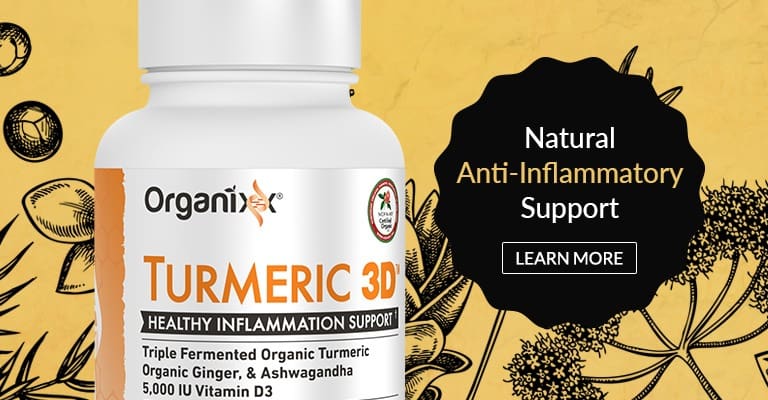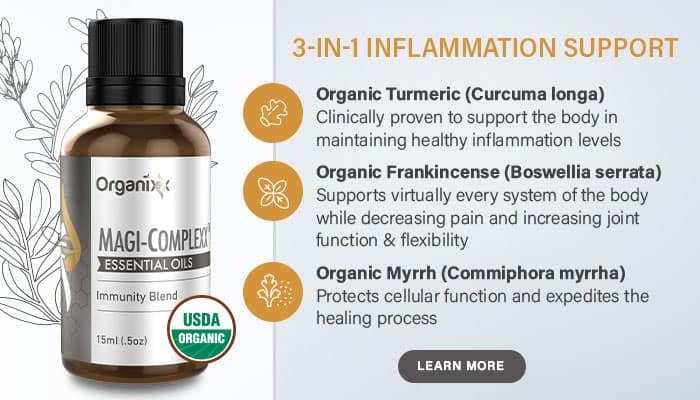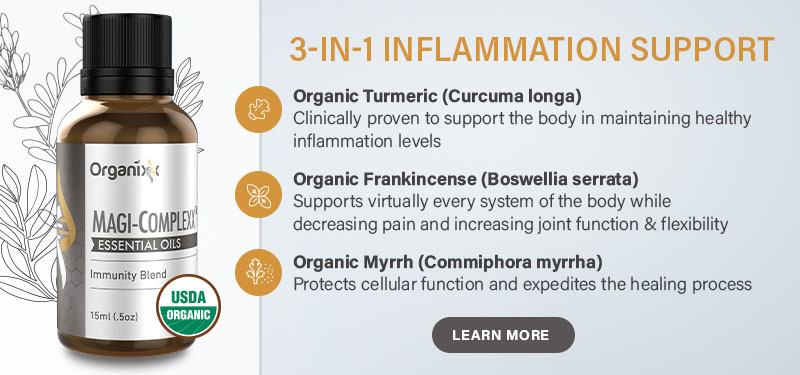The American Academy of Pain Management reports that 1.5 billion people worldwide suffer from chronic pain. Other studies prove that Americans are having to deal with chronic pain more than anyone in the world.
According to the National Institutes of Health (NIH), 11% of the U.S. population suffers from chronic pain [1]. That’s 25.3 million Americans with on-going, non-stop moderate to severe pain that has lasted for at least three months! What’s more, the same study found that close to 18% of the U.S. population suffers from chronic pain that is less severe.
If you’re suffering with chronic pain, you may feel like the best thing to do is to take it easy and lay in bed. At first glance, this may make common sense. Research shows, however, that getting moving may be the best thing you can do for chronic pain relief.
What Is Chronic Pain?
Most chronic pain comes in the form of headaches, backaches, and arthritis [2]. It can affect joints, bones, and muscles. It can also have no central location but instead be felt “all over,” like the pain associated with fibromyalgia.

Sometimes an acute injury can turn into chronic pain that lasts for years. Other times, chronic pain comes without warning or as a result of conditions like arthritis and other autoimmune diseases [3].
Whatever the cause, chronic pain can be debilitating for those who have it. It often seriously impacts a person’s quality of life and can lead to depression and/or anxiety.
Based on her hypothesis gathered from NIH Suicide statistics, nationally-syndicated columnist and author (A Nation in Pain) Judy Foreman estimates that as many as 20,000 Americans take their lives every year because they no longer want to live in chronic pain [4].
Thirty-four percent of Americans say that they feel aches and pains “very often” or “often” – more than any other country, according to a 2017 National Bureau of Economic Research working paper [5].
4 Key Reasons Americans Are Experiencing So Much Chronic Pain
Just why are Americans in so much pain? It turns out there several factors contributing to this trend.
First of all, Americans suffer more from lifestyle-related diseases, all of which come with their own brand of discomfort.
Secondly, the United States has one of the highest rates of obesity in the world and studies have linked obesity to chronic pain (and visa versa). Researchers at the University of Utah call pain and obesity “comorbidities,” because they tend to have such adverse effects on one another [6].

In addition, opioid drugs use is higher in American than in any other country in the world. Ironically, these kinds of pain killers can sometimes cause a unique form of heightened pain. Opioid-induced pain is often non-localized and can be coupled with a neurological imbalance which can mix with the original pain. This is called opioid-induced hyperalgesia (OH) [7].
The neurological components of pain, which are heightened by long-term opioid use, brings us to the fourth main component of the American pain saga: stress, anxiety, and depression.
As a disclaimer, we are not suggesting that chronic physical pain is “all in our heads.” However, the link between anxiety/depression, which affects at least 18% of the U.S. population [8], and heightened sensitivity to pain cannot be ignored.
A 2013 study published in The Clinical Journal of Pain found that anxiety levels can predict 12-month depression and pain severity cycles [9].

According to Harvard University, “The overlap of anxiety, depression, and pain is particularly evident in chronic and sometimes disabling pain syndromes such as fibromyalgia, irritable bowel syndrome, low back pain, headaches, and nerve pain. Psychiatric disorders not only contribute to pain intensity but also to increased risk of disability [10].”
Opioid use, obesity, an unhealthy, stressed-out lifestyle combined with a bad diet, and anxiety/depression – all of these things together make the perfect recipe for a chronic pain epidemic.
A Natural Chronic Pain Relief Solution
With all this bad news, the good news is that there is a LOT you can do to lessen chronic pain without drugs, and even heal the underlying conditions which may be contributing to it.
The act of getting your body moving can help balance nervous system pain pathways having to do with serotonin and endogenously produced opioids (meaning opiods made in the body). These mechanisms allow you feel pain less while you are working out and for up to several hours afterward.

A 2017 study in the Journal of Physiology found that while exercise can sometimes exacerbate pain under certain conditions, in a lot of cases working out can lead to “exercise-induced analgesia [11].” The University of Iowa researchers reported that exercise can be especially pain-relieving for chronic musculoskeletal conditions like fibromyalgia, low back discomfort, and myofascial pain.
Exercise also helps to lower inflammation. Inflammatory responses are necessary in acute situations to heal the body. But when inflammation becomes chronic, nerves can become too stimulated, which may lead to on-going discomfort [12].
Another 2017 study conducted by researchers at the University of California-San Diego found that just 20 minutes of exercise was enough to kick in the body’s anti-inflammatory responses [13].
The Connection Between Exercise and Better Sleep
Besides the pain-relieving benefits mentioned above, exercise has been linked to better sleep. The National Sleep Foundation reports that regular moderate aerobic exercise can provide relief from insomnia [14]. This is significant because sleep issues and chronic pain often go hand in hand, according to experts at the Cleveland Clinic, among others [15].
Exercise for Chronic Pain Sufferers: 5 Ways to Work Out
#1 – Strength Training

Strength training can be great for people who suffer from arthritis. It can also be a way to get back into “movement mode” after a long time of inactivity. Strength training also strengthens muscles around an injury area, which can help take the stress off joints.
Experts recommend starting with one or two-pound weights and slowly building up to 5 or 10 pounds [16]. You can do this easily at home by performing a few reps with soup cans or doing a few sit-ups and push-ups in your bedroom before starting your day. Be sure to increase the number of reps and poundage incrementally as you gain strength.
#2- Swimming
Swimming isn’t just low-impact, it is no impact. Gravity isn’t an issue when you’re in the water, so any kind of swimming sport is going to be great for individuals with osteoarthritis of the knee or other forms of musculoskeletal condition, joint disease, or overall body pain.
Choose swimming as your exercise of choice “where any kind of impact may exacerbate an underlying problem,” says Dr. Perry Fine of the University of Utah School of Medicine for an interview with Health magazine.
Whenever possible, look for natural salt or saline pools and stay away from heavily chlorinated water or pools that use bromide [17]. Regular exposure to these chemicals can lead to halide toxicity which can affect the thyroid.
#3 – Walking
Walking is very low-impact so it can be a good choice if you don’t have serious knee or foot issues. You can also tailor your walking experience to fit your needs.

Perhaps you enjoy the relaxation that a stroll can bring. Fast walking, or “power walking,” allows you to work up as much of a sweat as other aerobic activities. Finally, walking is very flexible. You can do it anytime, anywhere.
We recommend walking in nature whenever possible. Shinrin-yoku is Japanese for “forest bathing.” Studies have shown that walking in nature can reduce concentrations of the stress hormone cortisol, lower pulse rate and blood pressures, and increase immune system response.
Shinrin-yoku also switches on the parasympathetic nervous system responses, which is responsible for many functions in the body, including digestion and healing [18].
#4 – Tai Chi
Practicing the ancient Chinese art of tai chi is a great way to move energy (or chi), build strength, and promote both mental and physical longevity.
A randomized trial published in the New England Journal of Medicine found that people with fibromyalgia who practiced tai chi just twice a week had less pain and stiffness than those who didn’t [19].
#5 – Yoga

Yoga is another movement art whose benefits go beyond stretching stiff muscles. The breathing exercises often associated with yoga can have great benefits for chronic pain, even for someone who is bed-bound. Keep in mind, however, that while a little challenge is okay, discomfort that is beyond your comfort zone is a sign that it’s time to stop.
If you’re in chronic pain, finding the motivation to move your body can be challenging, and may even seem counterintuitive. Once you have the go-ahead from your doctor, give it a try for a week or so, and then see if you notice a change. You may be pleasantly surprised by how much natural chronic pain relief moving your body can provide!
Turmeric 3D from Organixx provides you one of the most “bioavailable” forms of turmeric due to its unique fermentation process. This means your body experiences the maximum benefits of the purest, most potent turmeric available!
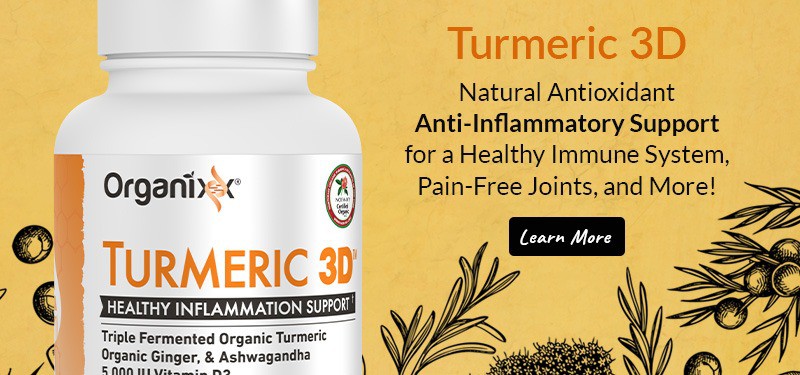
If you’ve ever experienced clove essential oil, you probably remember it. The smell of clove is unique, pungent, and spicy. Basically, when it comes to aromas, you either love clove or can’t stand it. Either way, you can’t deny the vast healing power of this most pungent spice that has been used within Chinese medicine and in other parts of the world for over 2,000 years − particularly when it comes to tooth pain and mouth health.
Historical Use of Clove Oil for Toothache and Gum Pain
According to The History of Dentistry by Walter Hoffmann-Axthelm, the Emperor of China was said to have used clove as a “mouth perfume” as far back as 200 AD, and the first medicinal reference to cloves was by 10th century Arabian dentist al-Gazzar, when cloves were used to control mouth odors and pain.
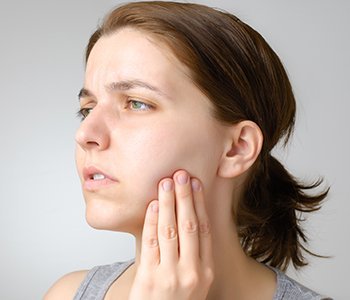
Even today the most common association people make with clove essential oil is to oral health and to relieve painful tooth and mouth issues.
Isn’t it incredible that despite all our medical and dental advances that centuries later clove is still a natural remedy to relieve painful toothaches and achy gums!
It’s also been a long-standing favorite of parents with teething babies. With this method a tiny amount of clove oil, heavily diluted with a light carrier oil to avoid irritation (i.e. coconut or olive oil), is applied to the affected area to soothe the pain.
What makes clove so effective at providing temporary relief from tooth and gum pain (e.g., dry socket)? Studies have confirmed that one of the active ingredients in clove is benzocaine, the same basic stuff doctors and dentists usually use to numb a local area before inserting a needle. If you’ve ever gotten clove oil on your tongue you’ll recognize that numbing (“my tongue is frozen”) effect!
A study published in the Journal of Dentistry in 2006 looked at whether clove gel was as effective as benzocaine for numbing purposes. The conclusion? That both clove and benzocaine lowered pain more than placebo and that “Clove gel might posses a potential to replace benzocaine as a topical agent before needle insertion.”
Can Clove Oil Help Protect Tooth Enamel?
Another interesting advantage of using clove for your gums and tooth health is that it may also help with tooth “decalcification” or tooth “erosion.” If you’re heeding the advice of health experts that say to drink a glass of water with lemon juice every morning, then this is especially applicable to you…
Drinking lemon water first thing in the morning is a GREAT thing to do for your overall health, but it might not be the best thing for your teeth. (As a side note, a drop of lemon essential oil in your water is a good alternative to lemon juice in water. Drinking lemon water with a straw can also help to protect your teeth). All that acidic liquid from fresh lemon juice can do a number on your tooth enamel over time – especially if you brush too soon after consuming. (Tip: wait at least 30 minutes before brushing).
Clove oil, however, has been found to support tooth health by helping to slow dental erosion caused by acidic foods and drink. In fact, in some studies, such as a 2012 investigation conducted by the Indian government, clove oil was found to actually help with teeth re-mineralization.
Knowing what clove oil can do for your teeth, gums, and tooth enamel, why would you want to use fluoride for so-called tooth health? After all, why risk all the nasty, proven side effects – including sterility and lower cognitive ability – that potentially comes along with it?
Do yourself a favor and ditch the fluoride toothpaste (and the tap water that may contain fluoride as well) and go for side effect-free clove oil. It’s natural, free of toxins (if from a quality brand), and has been demonstrated effective over thousands of years for your mouth health. You can find a healthy DIY toothpaste recipe here and a mouthwash recipe down below.
Clove for Your Gums & Overall Dental Health
Did you know that inside your mouth there are over 700 different kinds of bacterial species? It’s safe to say that not all of them are the “friendly” kind. And this is precisely where clove’s unique anti-bacterial properties come in handy. Clove can provide a level of protection against bad bacteria which in turn helps to prevent gum disease.

Microorganisms in the mouth that can lead to gum disease and tooth decay are resilient. They have their own “will to survive” that often make them hardy and difficult to control.
Many strains of harmful bacteria that lodge themselves in the mouth – and in the body – develop resistance to traditional avenues of controlling them, such as antibiotics.
According to a report published in the journal Compendium, many bad bacteria can’t develop a tolerance nor resistance to clove oil (thyme oil as well). This fact makes these two essential oils very effective anti-bacterial agents for the mouth and gums.
A side note about clove’s anti-bacterial properties: some experts say that clove oil can even help with Candida overgrowth when taken internally. Be sure to work with a naturopathic health professional to determine how best to proceed if addressing this condition.
Caution When Using: Clove Oil Is Powerful
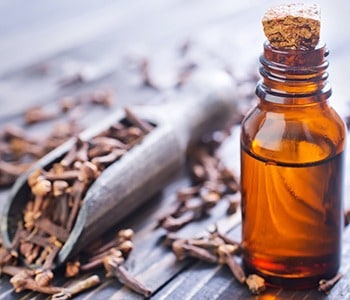 When it comes to clove oil, more is not necessarily better. Clove essential oil is considered a “hot” oil that can be harsh on the stomach lining if used internally too much.
When it comes to clove oil, more is not necessarily better. Clove essential oil is considered a “hot” oil that can be harsh on the stomach lining if used internally too much.
It can also be irritating to the skin, so always make sure that you use a quality organic carrier oil when you apply it to the skin. This goes for the skin in your mouth (i.e. your gums) as well.
Be especially careful to keep clove oil away from your eyes and other sensitive membranes as it will sting. If you do accidentally apply it in the wrong spot, don’t flush with water which will only spread it around − dilute with a carrier oil.
And of course, make sure that your clove oil has “supplement facts” on the label. Remember that if your essential oil label does not have this wording or information then it should NOT be used orally.
In fact, because the skin is a great absorber (we literally “drink in” all the creams, lotions and oils we slather on it), it is best to always use quality essential oils no matter what the capacity you are using them in. That just makes good, safe sense!


